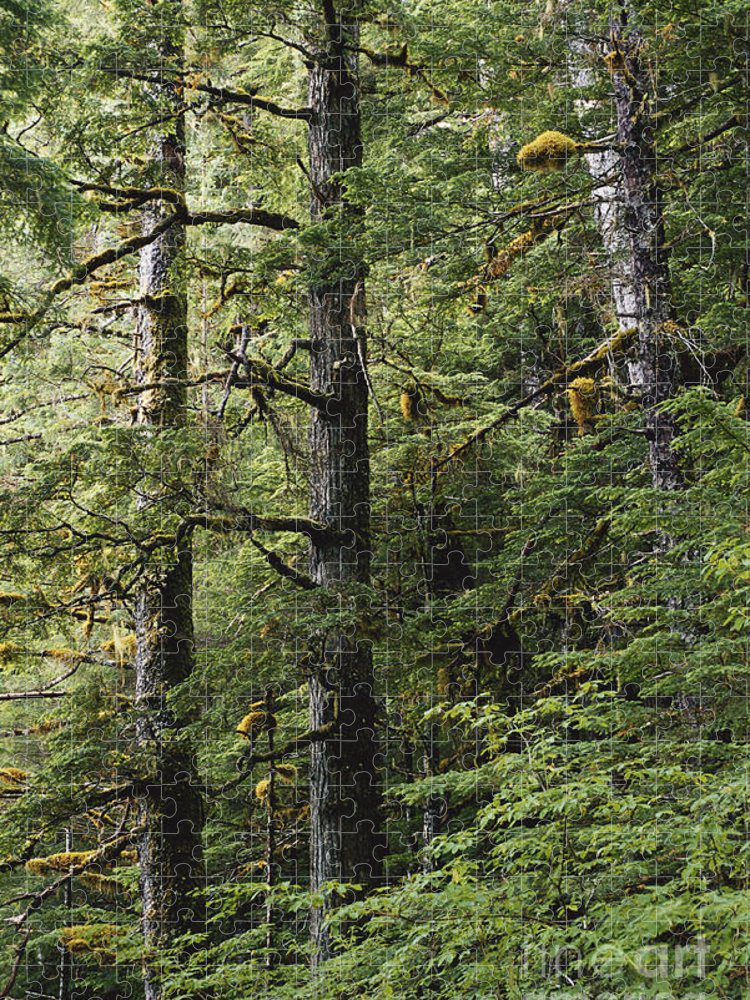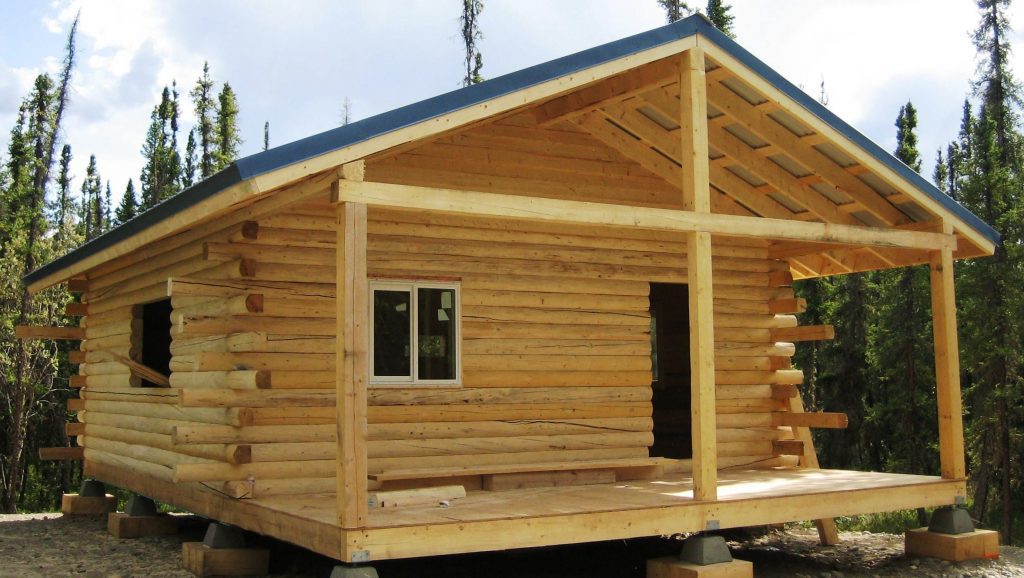The Puzzle
Much of Alaska is draped with immense timber stands in various stages of health, re-growth and succession.
It’s like a 1000 piece puzzle still in the box. All the pieces are there. You can see the picture on the box.
You can see the way all the pieces fit together to create the big picture…when everything is connected.
There are many pieces to the Alaska forest puzzle. And in this puzzle, the forests are changing rapidly.
The Setting
Increasingly frequent and destructive fires in the interior of the state burn each summer.
Beetle-kill spruce stands spider out across South-central, inviting similar catastrophe.
Countless thousands of acres of decades-old Southeast clearcuts are now dense stands of young growth sucking up millions of tons of carbon dioxide – stands that require care, attention, and long-term management.
In this Alaska puzzle, people of the forests need meaningful jobs, affordable homes and energy within a sustainable economy.
Puzzle pieces include loggers, sawyers, accountants, lawyers, Tribal leaders, chipper feeders, boiler stokers, politicians, statisticians, truckers, muckers, bankers, builders, engineers… and Indigenous cultures with countless generations of stewardship of this puzzle.
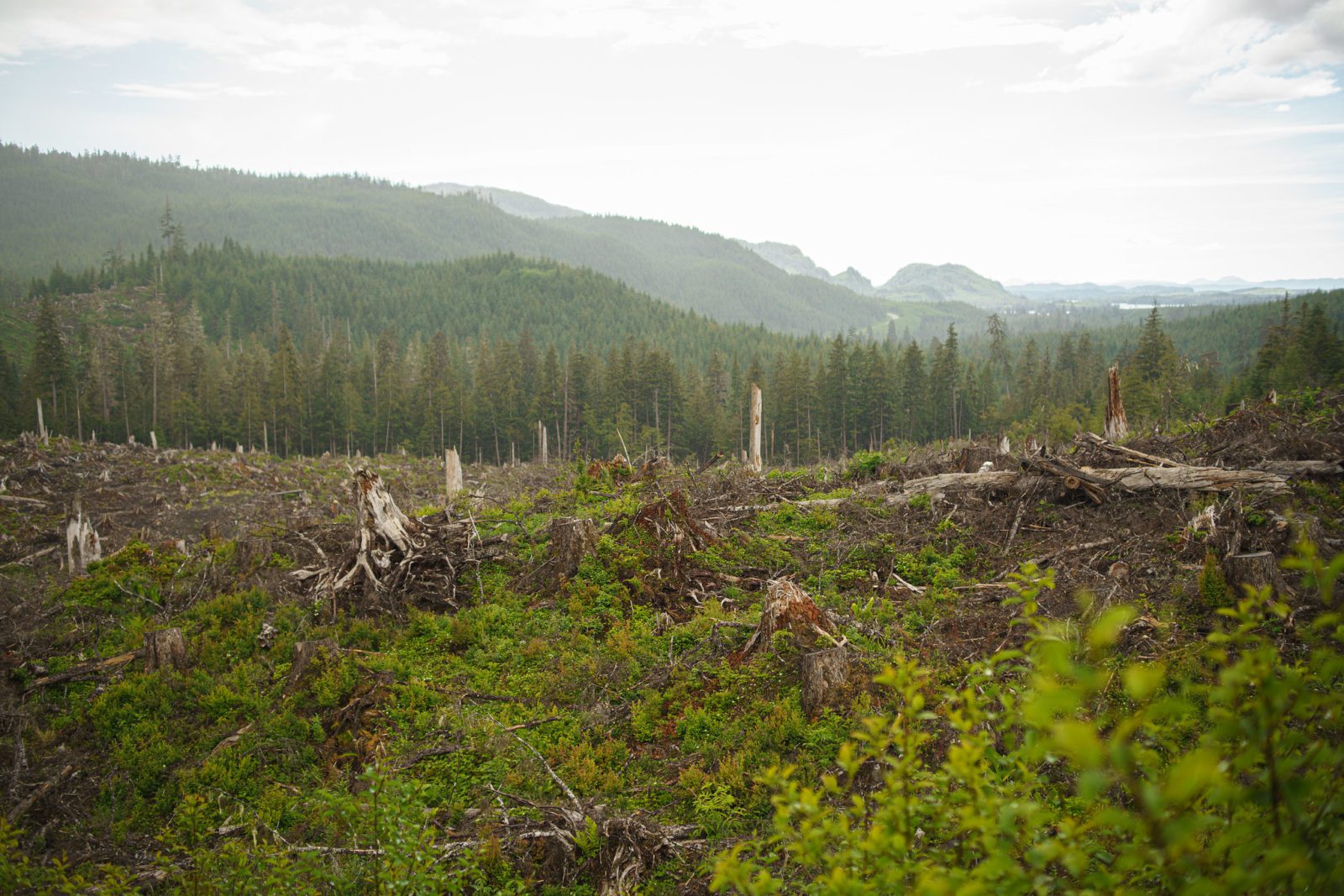
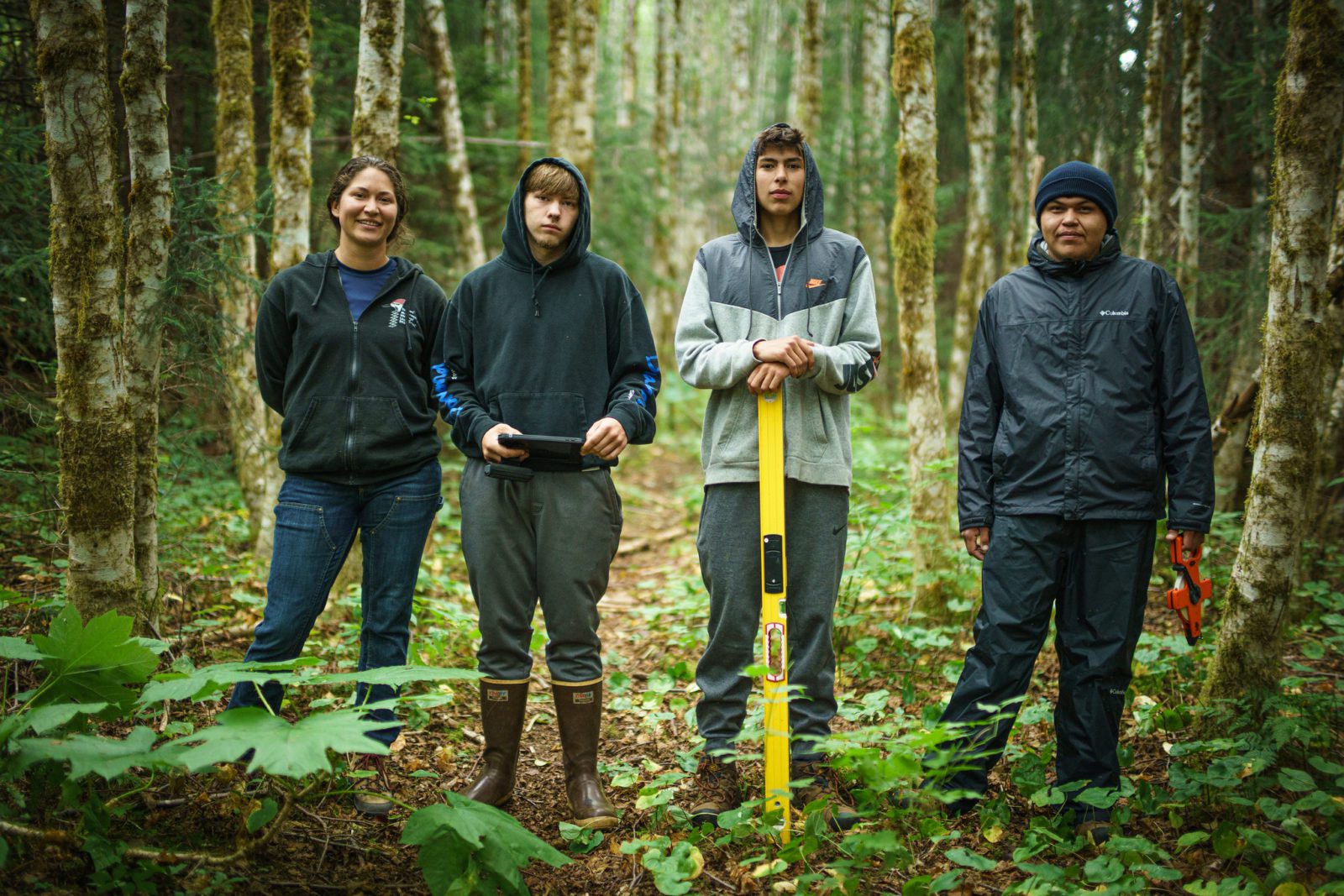
photos by Bethany Goodrich – SSP
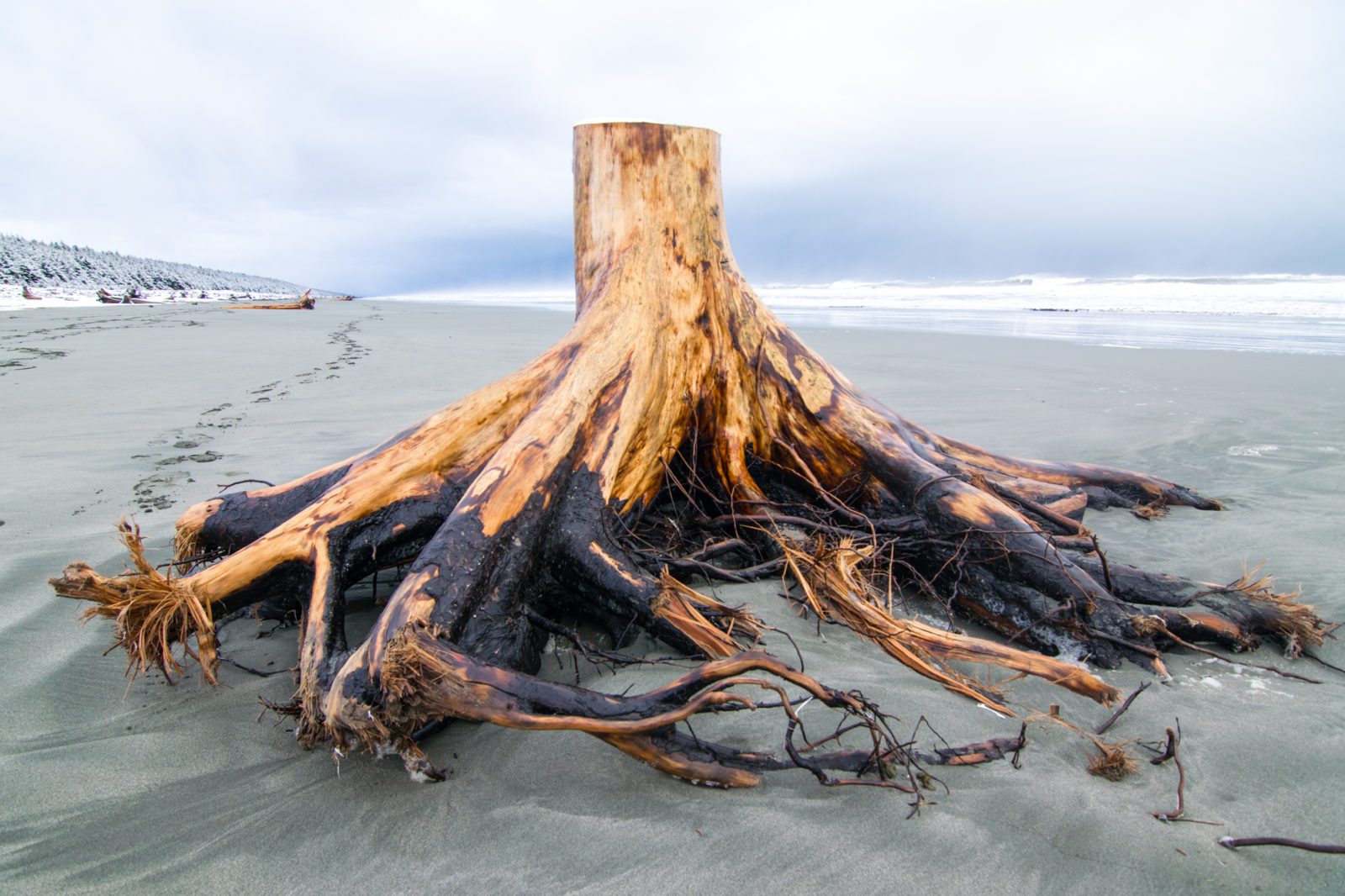

photos by Bethany Goodrich- SSP
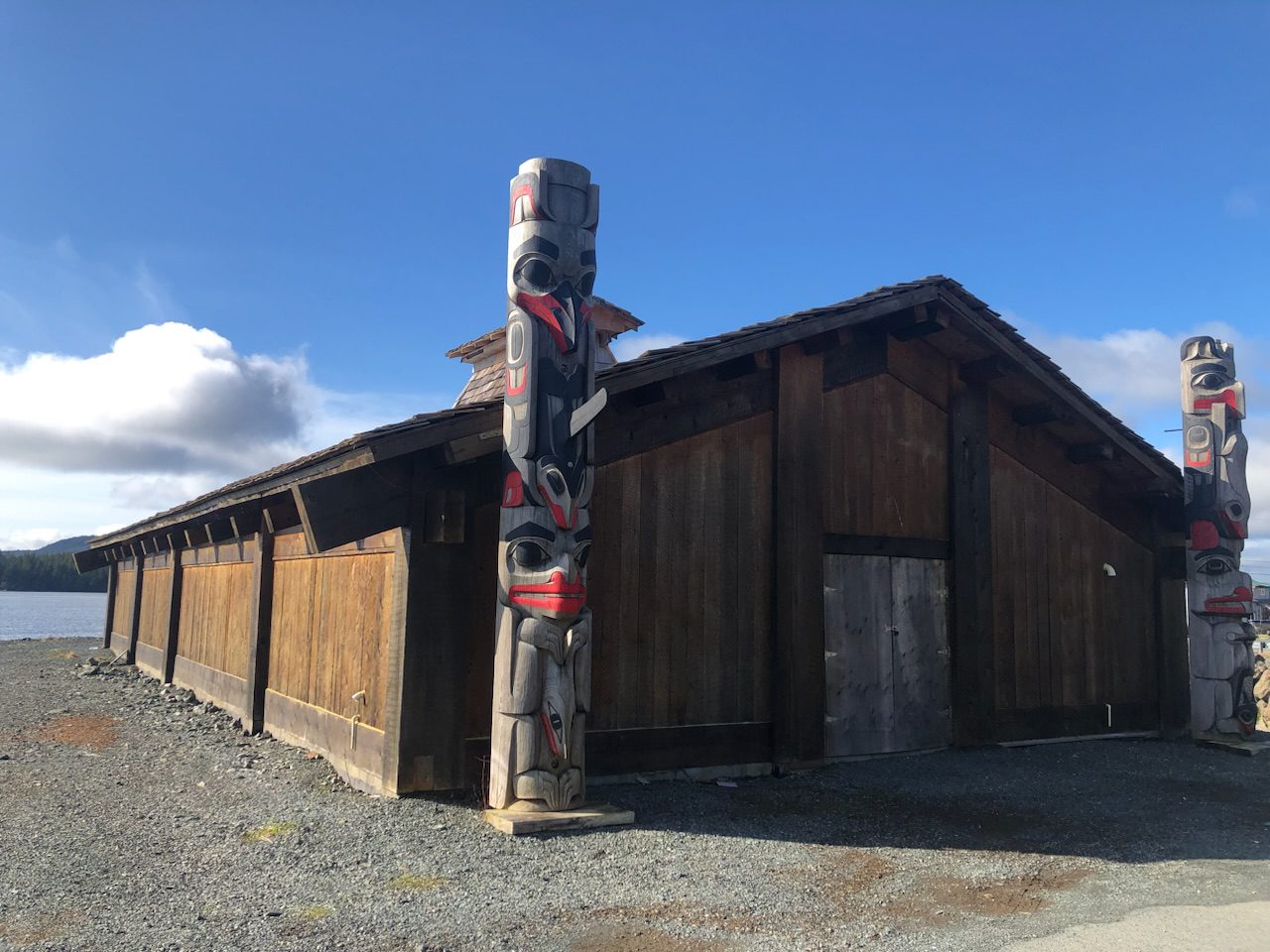
Haida long house in Hydaburg photo by Clay Good – SSP
The Question
Place. Roots. Deep roots.
It’s not always easy to describe or explain why some people opt to live in challenging, isolated, remote places. Places like Alaska. For many, it’s all they’ve ever known.
Having a home. Building a home. Being home. A sense of place and belonging and connection are central human needs that are often profoundly met in small, remote communities across Alaska.
But land to build on is increasingly scarce. Costs to build are further amplified by shipping-in imported building materials.
And the costs of energy in small, isolated communities further adds to the economic burdens. This is especially true for heating – the largest line item for most Alaska household energy budgets.
So, the question is – How best to connect the interrelated and interconnected puzzle pieces of affordable housing, renewable energy, employment, economic resilience, climate change, and healthy forest management for those who live amongst the trees?
The Gathering
While many individuals are working on various parts of the puzzle, they aren’t all necessarily aware of the efforts of others.
Post-pandemic, it was past time to gather all interested parties to break out the puzzle box for some quality time working on the puzzle, together.
With leadership from Southeast Conference and Yukon Territorial Gov’t, the Alaska – Canada Wood Energy and Small Log Conference chose Fairbanks for their October gathering along the Chena River.
The season’s first snow and the Aurora Borealis greeted the 100 + wood energy professionals from Tribal and First Nation, State, Federal, and Canadian agencies.
The event even attracted a small contingent from Japan, Switzerland, Austria and Denmark – all converging for a week of reconnecting and retooling to meet the growing opportunities in wood energy and young growth wood utilization.

Aurora through the trees – photo by Bethany Goodrich – SSP
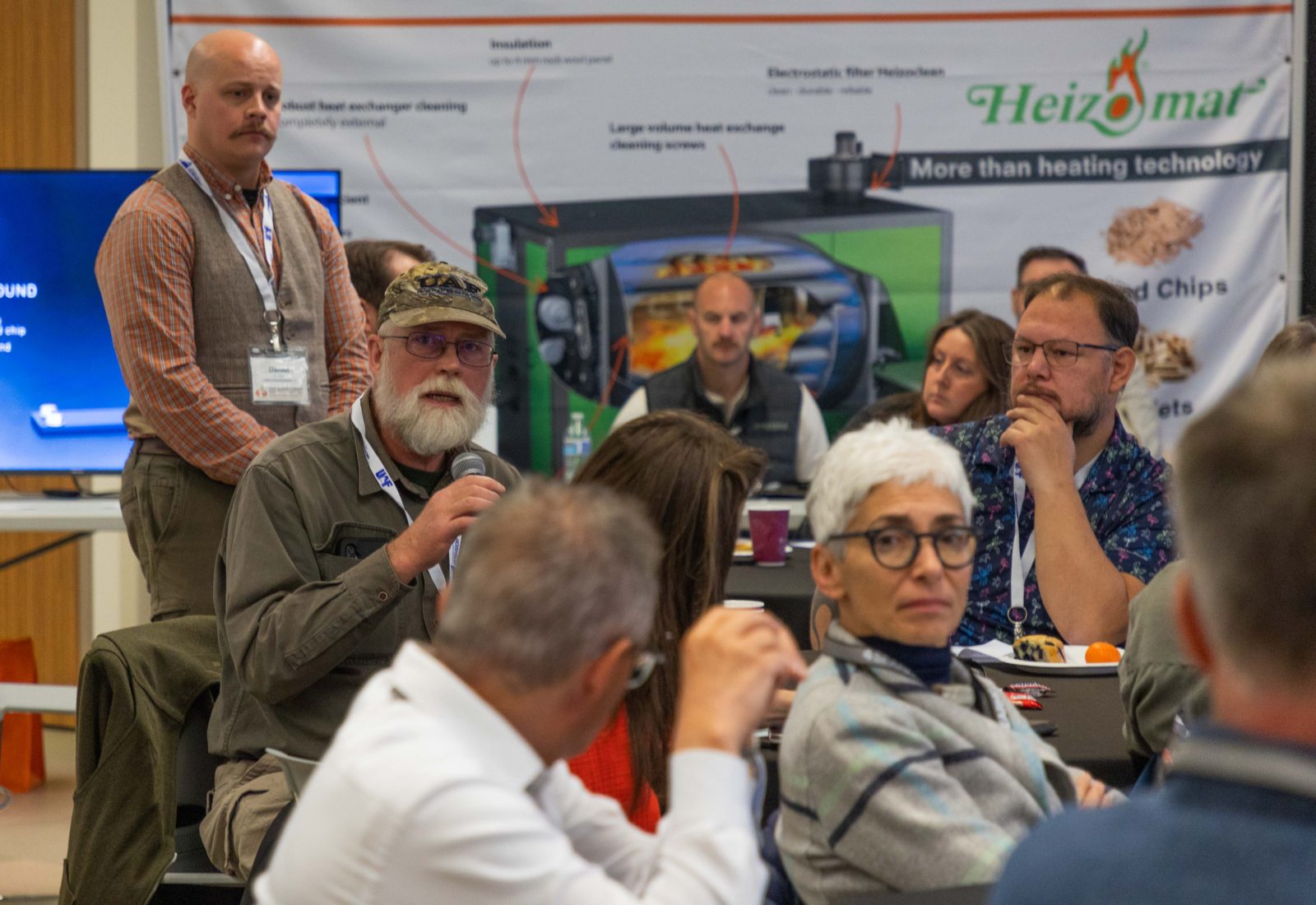
Conferees share between panel discussions photo by Amanda Byrd – ACEP
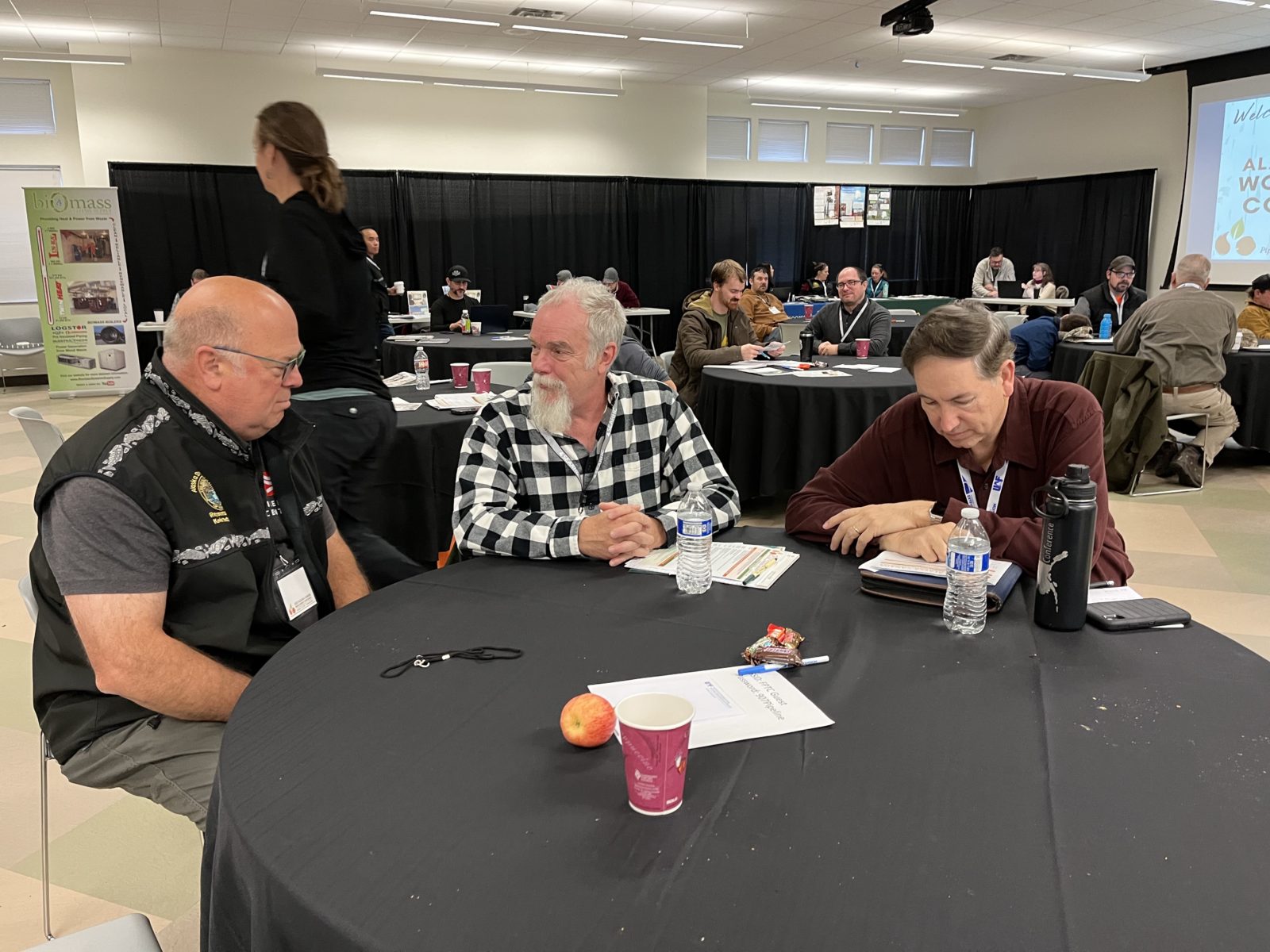
Alaska State Representative Kevin McCabe, Clarence Clark (Alaska Forestry Assoc) and Robert Venables (Southeast Conference) discussing issues at the conference.
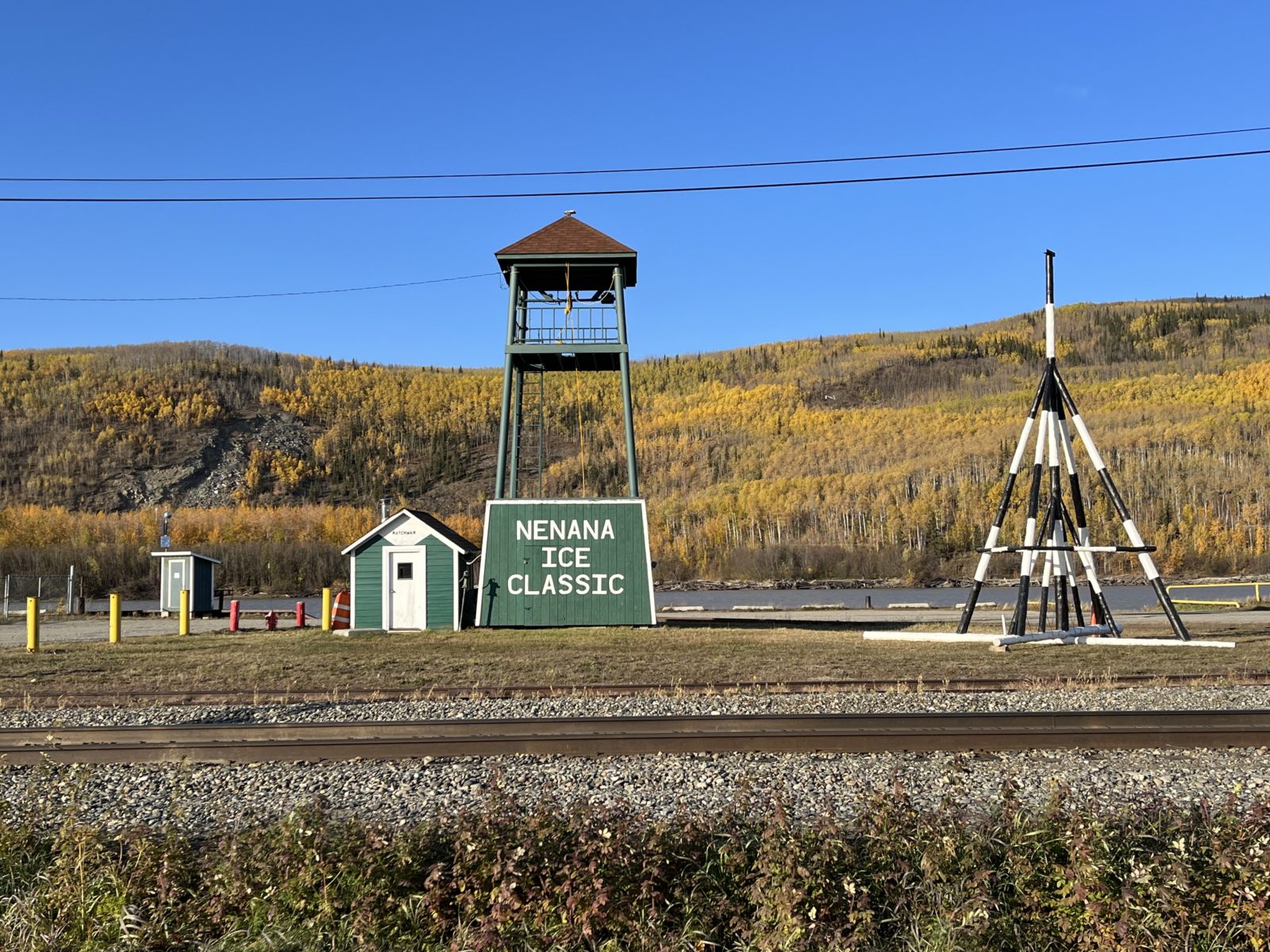

Nenana’s new biomass district heat and community center under construction
photos by Clay Good – SSP
The Agenda
Panel discussion topics ranged from the importance of safety in the logging industry to the abstractions of carbon sequestration schemes.
Speakers ranged from nervous loggers who have never spoken to a large group, to biochemical engineers who have never picked up a chainsaw, to politicians who always know how to use a microphone.
Field trips to Nenana and to area mills introduced the entourage to some of the challenges and solutions to heating and building in the north country.
Community leaders there are building a central heating plant and community center, but instead of burning oil, they will burn fire hazard and other waste wood that’s chipped and stored on site.
Besides heating the schools, water utility, and other public buildings, they’ll use the heat generated at the plant for an on-site health spa, showers, fitness facility, and a cafe – all much needed resources in this small, remote, resilient and resourceful community.
Though the event agenda was wide-ranging and diverse, it wasn’t long before speakers’ and panelists’ narratives converged on the nexus of using abundant young growth stands and fire hazard forests to provide much-needed housing, jobs, community safety, greater food security, and energy independence.
The Forest For the Trees
Communities that live in and around these changing forests often lack affordable housing and pay dearly for heating fuel – while surrounded by the traditional, renewable solutions.
Valuable wood resources often go up in flames – whether its burning piles of slash culled and thinned to improve forest health; timber burning in devastating wildfires; or sawmills burning waste from production.
Utilizing each tree more fully helps to amplify local economies and create greater system resilience.
Creating local and regional markets for wood products using abundant smaller diameter trees requires retooling across sectors – including new harvest and transportation methods; new mills designed to better utilize smaller trees with less waste; and new methods for managing the resources are all essential to meeting the increasing demand for affordable housing and renewable energy.
New State policies permitting the certification of lumber by local mills for local markets could help catalyze statewide markets for locally produced forest products, helping to provide more affordable housing and jobs.
But ultimately, training the next generation workforce to meet the looming demand for young-growth wood products is the first priority – as the number of loggers and sawyers in the region fell with the decline of old-growth logging
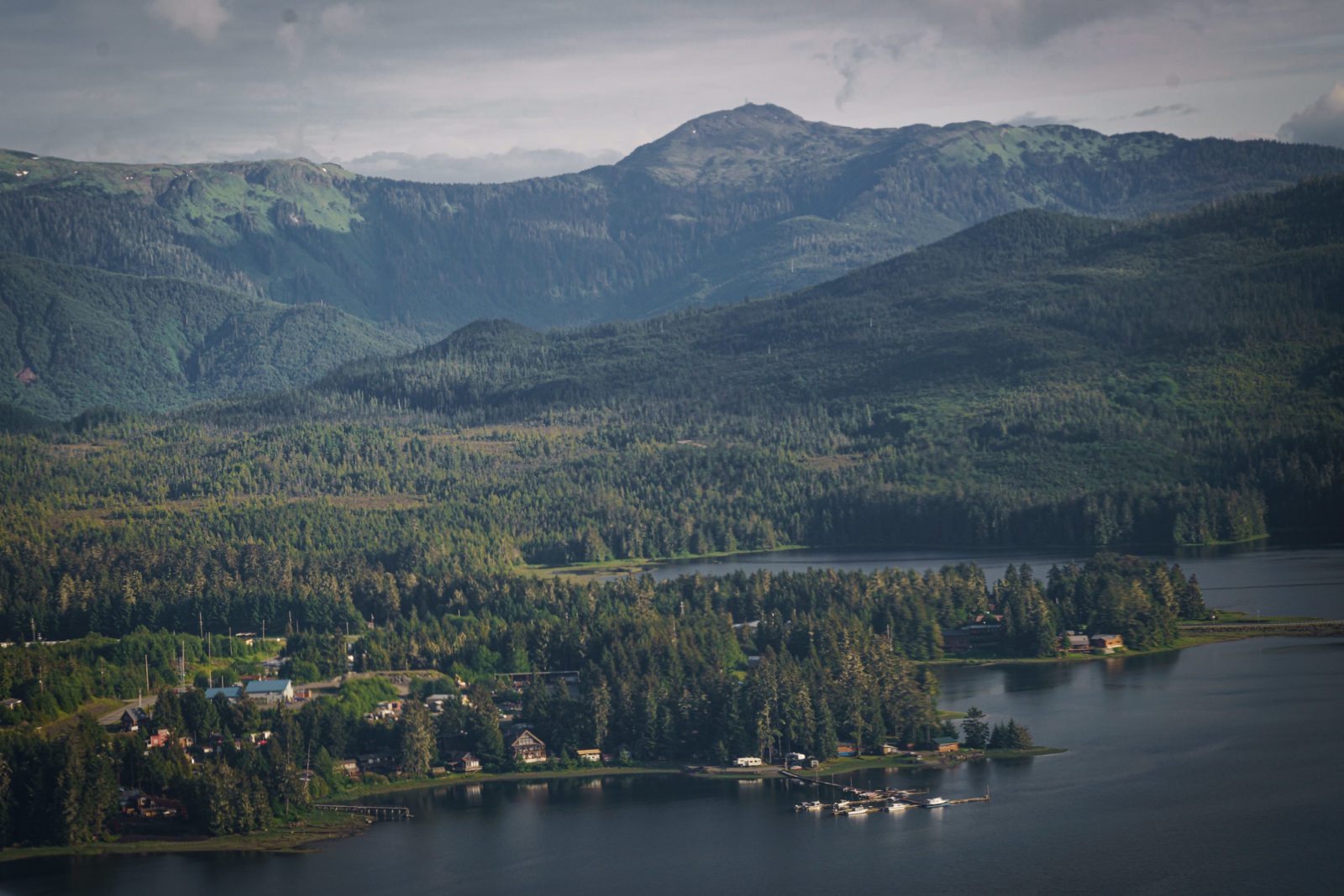

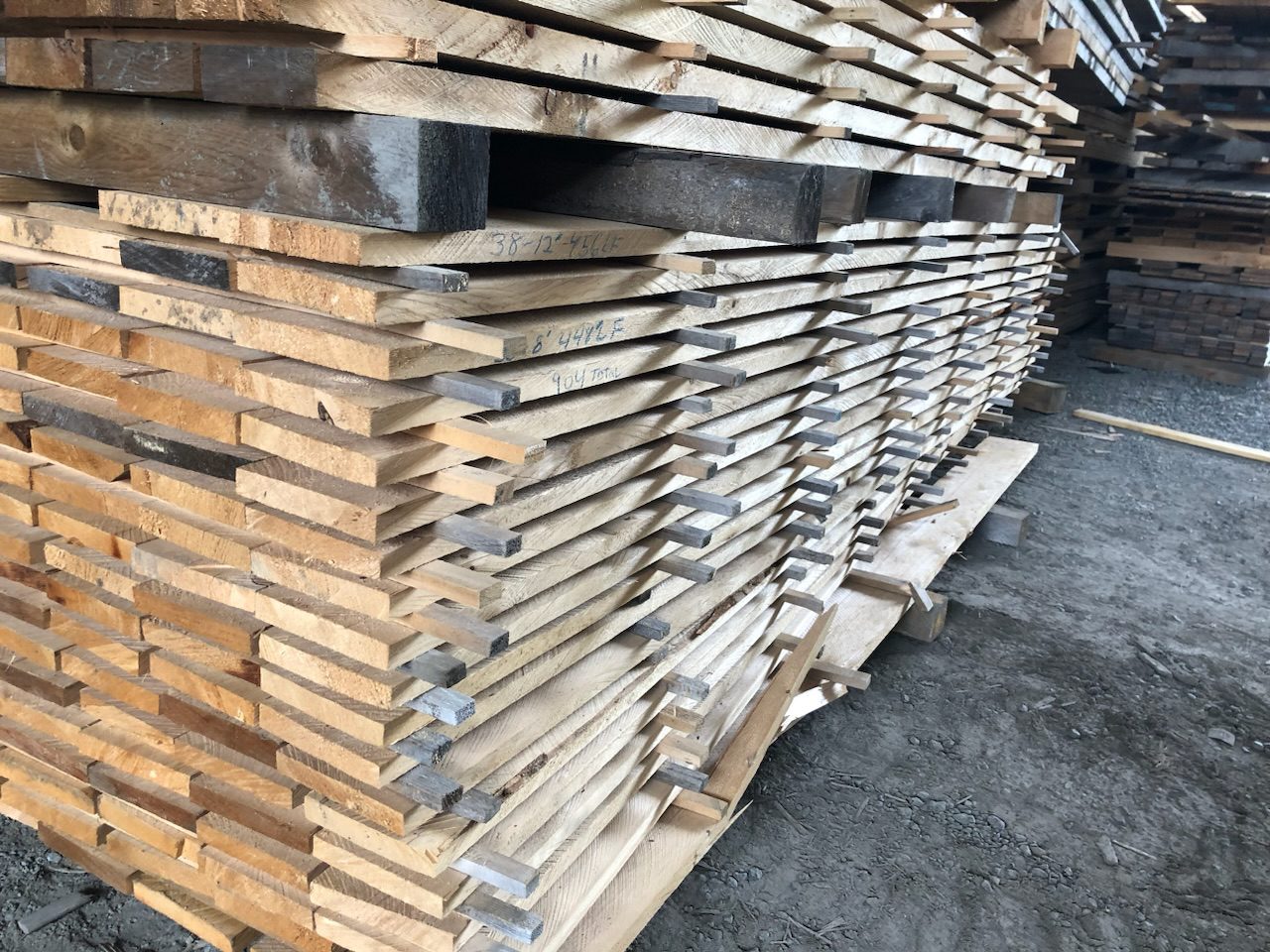
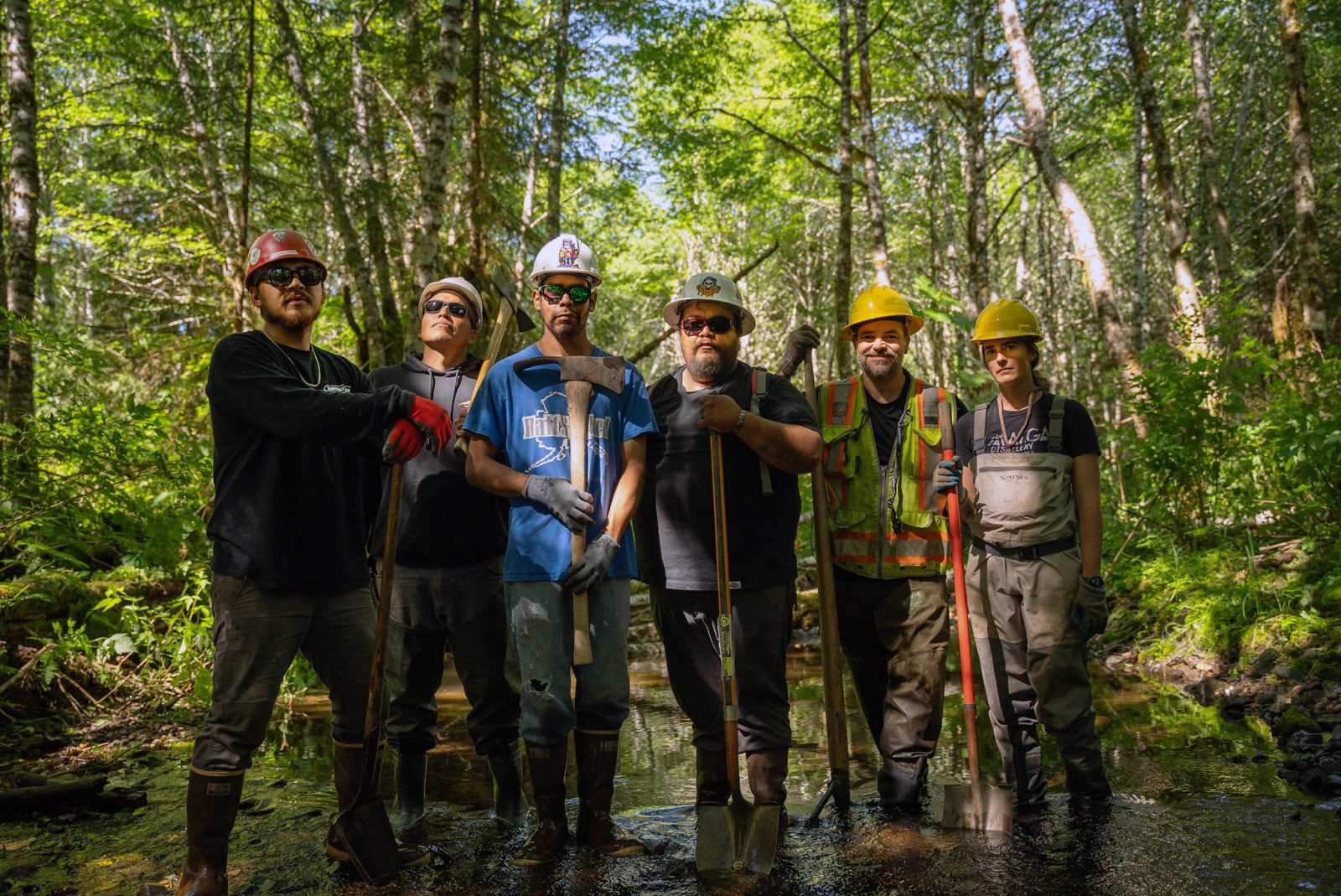
photos by Bethany Goodrich, Clay Good and Lee House- SSP
The Vision
Panel discussions at the conference noted the demand for affordable housing is acute in rural Alaska.
Limited housing necessarily limits economic opportunity and quality of life for communities on the economic edge.
The conference provided opportunities for communities to showcase some innovative solutions to the forest-housing-heat puzzle.
Galena, Haines Junction, and Napiamute are all small communities with Tribal leadership taking large strides forward as they foster home building programs utilizing local wood resources and innovative, energy efficient designs to meet the needs for local housing and employment.
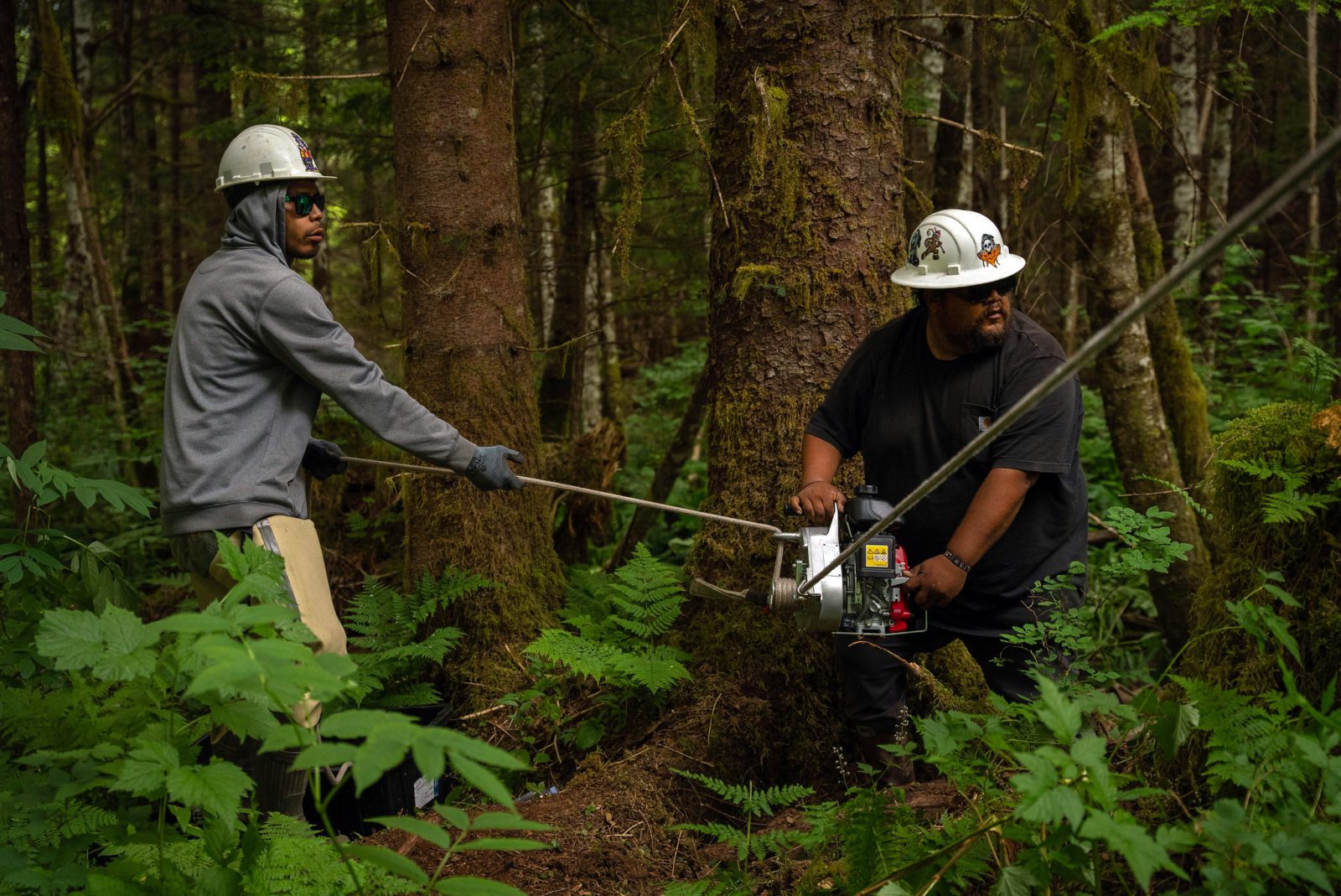
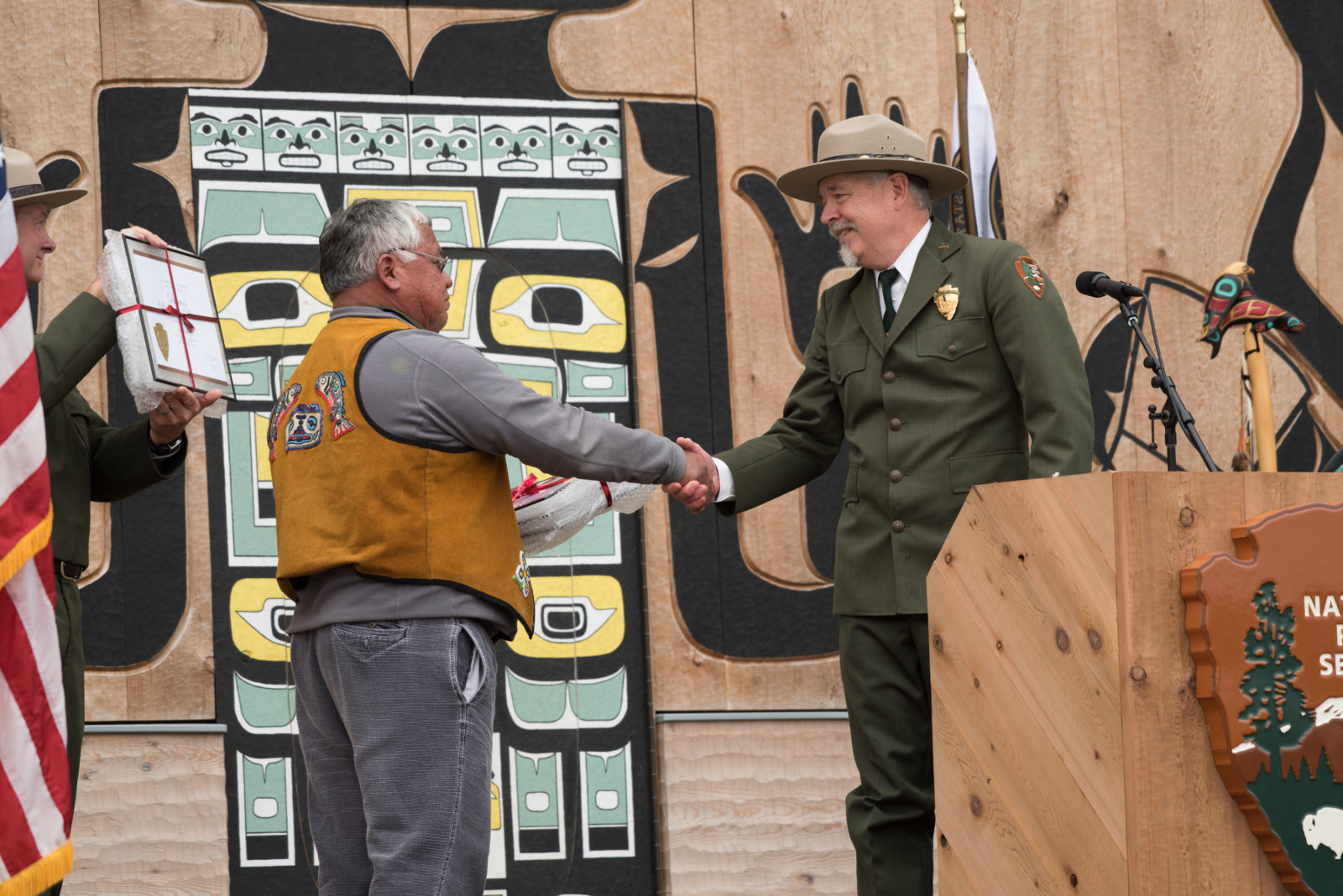
photos by Lee House and Bethany Goodrich – SSP
Wooch.een – Working Together
Perhaps the greatest value of gathering far-flung talent and perspectives to the Fairbank conference was how much more efficient collective efforts are in helping to solve the forest-people puzzle, than to work in isolation.
Across Alaska, Tribal citizens and organizations take great interest and pride in managing local resources …as they have since time immemorial. Unfortunately, forest ecosystems don’t necessarily follow ownership or management boundaries on a map.
Planning for long term wood supply – access to the right stands of trees at the right time – also creates opportunities for small community-scale land co-management and integrated solutions across ownership boundaries – including new opportunities to manage forest systems over decades and centuries to come.
The Sustainable Southeast Partnership encourages and celebrates new partnerships, agreements and bonds of trust forming between Tribal and other governing agencies as a new paradigm of consultation, collaboration, and cooperation takes root in the forested regions of Alaska.

Clay Good is the Regional Energy Catalyst for the Sustainable Southeast Partnership (SSP) since 2018. The Renewable Energy Alaska Project (REAP) employs Clay to promote and support energy literacy, beneficial electrification, and biomass heat efforts across Southeast.
